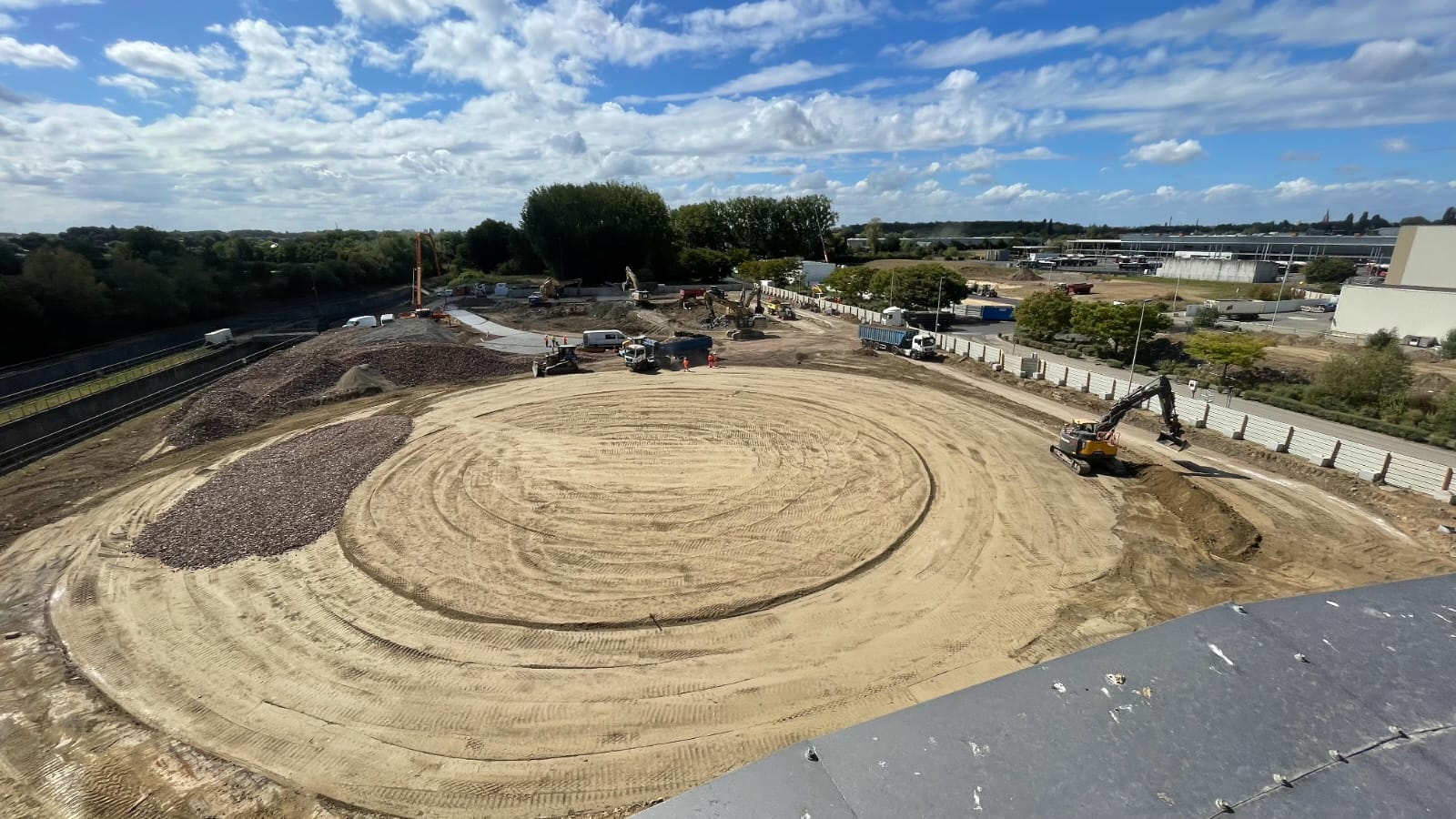The Métropole Européenne de Lille lays the first Stone of the Future Wastewater Treatment Plant in Wattrelos – Leers
The Métropole Européenne de Lille (MEL, Metropolitan Council of Lille) hosted the official groundbreaking ceremony for the future wastewater treatment plant in Wattrelos – Leers on Thursday, on August 28, 2025. The event brought together Damien Castelain, President of MEL, Dominique Baert, Mayor of Wattrelos, Jean-Philippe Andries, Mayor of Leers, Isabelle Matykowski, General Director of the Artois-Picardie Water Agency, as well as representatives from the Saur group and its subsidiaries, including Élise Le Vaillant, Vice-President of Saur France North-East, and Hugo Bardi, President of Saur Water Engineering and Stereau, alongside companies involved in the project, such as the NGE Group, top 4 construction Group in France, leading the civil engineering works on the project. This milestone marks the start of a strategic construction project for the region, one of the largest wastewater treatment plant modernization projects in France over the next decade. A Major Project for the ecological and climate transition of the MEL
The Wattrelos wastewater treatment plant, which began operation in 1986 and was renovated in the early 2000s, currently processes wastewater for nearly 417,000 equivalent inhabitants across 15 municipalities of MEL and the town of Mouscron (Belgium). With this extension and reconstruction project, the plant’s capacity will increase to 511,500 equivalent inhabitants by 2031, representing a more than 20% increase.
The future plant will provide enhanced performance:
- Treatment capacity will increase from 3.3 m³/s to 10.3 m³/s with the creation of a new rainfall management system (7 m³/s).
- A storage basin of 30,000 m³, equivalent to 10 Olympic swimming pools, will allow better management of heavy rainfalls.
- Potential integration of treated wastewater reuse (REUT) for local use.
- Exemplary landscaping, including the creation of 4 hectares of flower meadows and the enhancement of hedgerow networks to promote biodiversity.
The construction schedule will be designed to minimize environmental and residential impacts. A group of 20 to 40 local residents will be involved to provide regular updates and feedback.
An exemplary, energy-positive plant
The new Wattrelos – Leers plant will be designed as a model of efficiency, performance, and circular economy. It will generate more energy than it consumes, thanks to a unique technological setup:
- Methanization of sludge from treatment will produce 11 GWh/year of biomethane, equivalent to the annual consumption of 2,800 residents.
- The energy potential of dried sludge will generate 14 GWh/year.
- Recovery of waste heat (2.2 GWh/year), covering the plant’s needs, equivalent to heating 1,500 homes.
- 6,000 m² of photovoltaic panels and hydroelectric turbines will cover over 10% of electricity needs.
The station will be powered 100% by green electricity.
Thus, it will become one of the largest energy-positive treatment plants in France, fully aligned with MEL’s Climate Plan and the decarbonization of essential services.
Environmental respect and quality of life
- The wastewater treatment plant will incorporate innovative features to enhance the comfort and quality of life for residents:
- Odor capture and treatment at the source.
- Enclosure of noisy equipment.
- Use of recycled water for all processes.
- Optimized sludge drying, reducing the volume of transport by over 1,000 trucks annually.
These measures will reduce nuisances, preserve resources, and strengthen the metropolitan policy for sustainable rainwater management, aligned with the Local Urbanism Plan and efforts to combat heat islands.
A major construction project
The total project cost is nearly 293 million euros:
- 200 million euros for the construction work.
- 93 million euros for operation over 12 years, entrusted to Saur France.
Financing includes subsidies from the Artois-Picardie Water Agency (€45 million in subsidies and €30 million in repayable advances) and the European Regional Development Fund (ERDF) (€6 million for the energy component).
The construction will be carried out in phases to ensure continuity of public service:
- 2025: Launch and preparatory work.
- 2026-2028: Construction of new facilities.
- 2029-2030: Progressive commissioning.
- 2031: Operation of the modernized station.
